
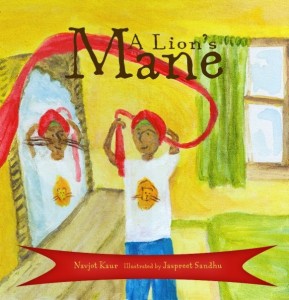 On our weekly library trips, I find myself going through shelf after shelf of children’s books trying to find something both entertaining and challenging for my young and enthusiastic readers. Often times, the books we find are one-dimensional; either instructive, or funny, or downright silly. Rarely do I come across a book that strikes a balance of being both educational and inspiring…this is what I found in A Lion’s Mane by Navjot Kaur
On our weekly library trips, I find myself going through shelf after shelf of children’s books trying to find something both entertaining and challenging for my young and enthusiastic readers. Often times, the books we find are one-dimensional; either instructive, or funny, or downright silly. Rarely do I come across a book that strikes a balance of being both educational and inspiring…this is what I found in A Lion’s Mane by Navjot Kaur
A Lion’s Mane is about the journey of a young Sikh boy who while discovering why he has his long mane (kesh), also learns about the principles of his faith. Concepts like patience, generosity, wisdom, and courage are all woven in to his beautiful red dastaar that guide you through the story.
In addition to the captivating illustrations, it is the simple messages that are reinforced throughout the story that I found particularly meaningful and easy for children to process. Statements like,
“When we learn something new, it makes each of us stronger”
“Being a Khalsa knight gives me the courage to stand up to bullies”
Although I have read several children’s books that touch on the Sikh experience, what I appreciate most about A Lion’s Mane, is how Sikh religious and cultural principles are raised in the context of other cultures and communities with similar principles. I had no idea of the symbolic role the lion played in Native American Hopi culture. In explaining who we are to non-Sikh communities, I think it is just as important to share how our traditions are similar as it is to show how we are different. This pushed me to learn a bit more about some of the other people and cultures mentioned. I found the glossary most useful in explaining to my children who is Wangari Mathai and what the Anishinaabe tribe is.
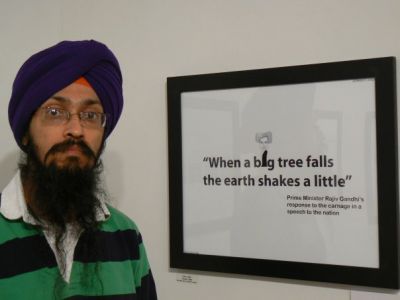 Vishavjit Singh’s work hardly needs any introduction in Sikhdom. Since 2003, his Sikhtoons have become ubiquitous on those webpages where Sikhs are found. It was the events of 9/11 that first pushed this Sikh activist and 1984 survivor to tell his story and the stories and thoughts of so many more to pick up his pen.
Vishavjit Singh’s work hardly needs any introduction in Sikhdom. Since 2003, his Sikhtoons have become ubiquitous on those webpages where Sikhs are found. It was the events of 9/11 that first pushed this Sikh activist and 1984 survivor to tell his story and the stories and thoughts of so many more to pick up his pen.
From politics to 1984, from sports to Hindutva, few topics are beyond Vishavjit’s interest. This past fall, as so many Sikhs sought to remember 1984 in their own ways, Vishavjit Singh had a gallery display his artwork.
The New Century Artists is a nonprofit gallery caters to underrepresented communities and is among 15 galleries housed in a building located in Chelsea. From November 17th to November 28th they played host to the exhibit – When A Big Tree Falls.
Last weekend I attended the Sikh Lens Sikh Art and Film Festival in Hollywood. I have attended film festivals all over North America and strongly believe in their need and presence in our community. Many times, however, the events get overshadowed by the glitz and glamour – the red carpet, the photographers, the eccentric outfits… I was therefore grateful that my experience at the Sikh Arts and Film Festival was a fulfilling one – I left knowing that Sikh Arts and Films bring value to our community and need to be supported. In addition, I felt the organizers made a special effort to keep the event focused on the directors, artists, musicians, actors, authors and organizations who were present. They recognized the fact that we are all in this together. Sikh Arts and Films are only beginning to be acknowledged, there is so much potential and growth that will still occur. However, this isn’t going to magically happen overnight, and it most definitely won’t happen without the community’s support.
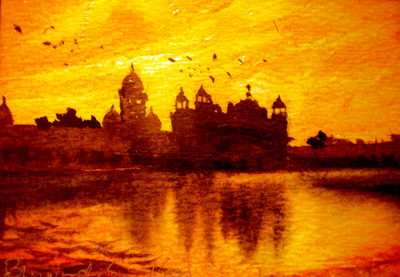 I was recently told that Sikhs in the UK spend 7 times more on license plates than they do on books (yes, 7 times!). While I’m not sure of the statistic in the US, the point is clear – perhaps we’re not investing in the right places? I think as a community we have begun to establish the need to support non-profit organizations that are working to address human rights, legal, education and activism issues (although we still have a long way to go to enhance our support). However, what goes hand in hand with this is the support and advancement of Sikh Art and Media. Without a doubt, events such as Sikh Lens are helping to pave the path – however, we as a community need to ask ourselves why we are so hesitant to spend money on independent films, children’s books, on historical references and on paintings. When I think about other immigrant communities, I notice that their advancement as a community comes from their support of one another. Whether we like to admit it or not, our community is extremely frugal and competitive with each other, and unless we start to move away from those stereotypes – we will not be creating a better world for our children.
I was recently told that Sikhs in the UK spend 7 times more on license plates than they do on books (yes, 7 times!). While I’m not sure of the statistic in the US, the point is clear – perhaps we’re not investing in the right places? I think as a community we have begun to establish the need to support non-profit organizations that are working to address human rights, legal, education and activism issues (although we still have a long way to go to enhance our support). However, what goes hand in hand with this is the support and advancement of Sikh Art and Media. Without a doubt, events such as Sikh Lens are helping to pave the path – however, we as a community need to ask ourselves why we are so hesitant to spend money on independent films, children’s books, on historical references and on paintings. When I think about other immigrant communities, I notice that their advancement as a community comes from their support of one another. Whether we like to admit it or not, our community is extremely frugal and competitive with each other, and unless we start to move away from those stereotypes – we will not be creating a better world for our children.
Two great events are happening this Saturday: in San Francisco- “Women in 1984”; in New York- Lahir.
If you’re anywhere near either of these 2 cities, you better be there, or you’ll regret missing out!
Women in 1984
Dr. Cynthia Mahmood’s work deals directly with the issue of militancy and she will discuss the violence in Punjab from the macro lens of India as a democracy.Navkiran Kaur Khalra will speak of her own experiences as the daughter of S. Jaswant Singh Khalra and the heritage of his vision. The Khalra family’s narratives is inherently linked to the states backlash against movements desiring human rights and autonomy.Jasmine Kaur Marwaha, human rights lawyer for Ensaaf, will be discussing the the right to reparations for victims of the November 1984 pogroms, as well as victims of the Punjab counterinsurgency, from a gendered perspective.
By neglecting art, we’ve been neglecting our spirituality. And perhaps vice versa. Perhaps we could practice receiving a little more, instead of doing, as we normally do.
Most of us, especially in Asian communities that so highly value scientific endeavor, and want the next generation to all be doctors, grossly undervalue art. Sadly, this might be stunting our spirituality.
How often have your teachers, parents, and other adults in your life impressed upon you the importance of active effort, purposeful thought, and discipline? The scientific methods we rely upon to explain our environments and the universe all rely on these traits and oh-so-important- rationality. Through decades of education, we’re pounded into submission, learning to accept that rationality is good, and irrationality, bad.
But that’s not entirely true. And in the last week, I noticed that both Japji Sahib and a popular American site (especially amongst techies) bypassed rationality to focus on the importance of a different kind of knowledge – intuition. And it rang true. Intuitively. Irrationally.
From the 13th Pauri of Japji Sahib:
 This weekend Sikhlens will be presenting its annual Sikh Art and Film Festival 2009. The film festival showcases the best in Sikh movie-making talents from around the globe. It also presents a forum for aspiring Sikh artists to also come and display their burgeoning talents. A few book launches are planned with a particular emphasis on children’s books. Authors of A Lion’s Mane and The Royal Falcon are planned to be in attendance to do a live reading.
This weekend Sikhlens will be presenting its annual Sikh Art and Film Festival 2009. The film festival showcases the best in Sikh movie-making talents from around the globe. It also presents a forum for aspiring Sikh artists to also come and display their burgeoning talents. A few book launches are planned with a particular emphasis on children’s books. Authors of A Lion’s Mane and The Royal Falcon are planned to be in attendance to do a live reading.
The inaugural Sikh Art and Film Festival will be held at the historic Egyptian Theatre in Hollywood, CA on November 13-15th.
In previous articles on The Langar Hall, I have written about how certain Sikh-film haters groan in jealousy and spew hatred, about the Sikhs’ taking advantage of new forms of media. Such efforts in the community should be encouraged and more platforms created.
The weekend features a number of different clusters, highlighting issues on the youth, creative Sikhs, short films, feature films, and even Remembering 1984. The Remembering 1984 cluster on Sunday afternoon will be co-hosted with the Jakara Movement in conjunction with it’s Visions of Truth film series.
So whether you come for the entire weekend, make it out to just one cluster (at $15 pre-sale, you won’t find a better price), or at least to Sunday’s mela, check the schedule, check out the films, and make sure you come out and support Sikh arts! We’ll be in attendance and will post on our experience after the event.
In keeping with a spirit of Remembrance and quest for Justice as the 25th anniversary of the Nov. 3, 1984 pogrom in Delhi nears, don’t miss out on these East Coast events! Many events have been held nationwide this past year- educating and inspiring young generations of Sikhs. We are getting better acquainted with our history, connecting with the Sikh spirit of activism, and becoming inspired to be agents of change.
One event that has been a particular pathbreaker has been Lahir. [1, 2] Not only has it created an avenue for artists to express themselves, it has done so around an event in our community’s history that is a catalyst for many, and thus become a catalyst itself. If you missed it in DC, don’t miss it in NY!
Lahir-NY: Saturday, Nov. 21, 2009
From the artists who brought you the original Lahir, together with additional national and local talent, get ready for Lahir – New York… [details below the fold]

 Those of you who know my blogging tendencies, know that I wouldn’t pass up an opportunity to post about our favorite New Yorker! Waris Ahluwalia’s recent presence in Vogue (hat tip: Anandica) comes about as a contender for the prestigious CFDA/Vogue Fashion Fund award. The award helps emerging American designers pursue their design and business plans through financial support and professional mentoring. Waris Ahluwalia is one of only ten designers nominated for this award for his jewelry business, House of Waris. He states that his inspirations “have always been love and history. But I don’t claim to understand either of those.”
Those of you who know my blogging tendencies, know that I wouldn’t pass up an opportunity to post about our favorite New Yorker! Waris Ahluwalia’s recent presence in Vogue (hat tip: Anandica) comes about as a contender for the prestigious CFDA/Vogue Fashion Fund award. The award helps emerging American designers pursue their design and business plans through financial support and professional mentoring. Waris Ahluwalia is one of only ten designers nominated for this award for his jewelry business, House of Waris. He states that his inspirations “have always been love and history. But I don’t claim to understand either of those.”[Waris Ahluwalia] moved with his family from Amritsar, Punjab to Brooklyn, NY at the age of 5. He thought of becoming a doctor, a lawyer, risked one advertising interview, attempted to make a music magazine, got involved with a friend’s NGO for increasing HIV/ AIDS awareness in South Asia and found himself back in New York, immersed in the art life of the city. He then has a guy in New York make some jewellery for him, escapes the cold of the city for LA, helps a friend set-up a restaurant and one day, wanders into ultra-luxe boutique Maxfield’s where the owners spot his rings, immediately place an order, they sell out and House of Waris is born. [link]
I came across this video from a cultural event in Northern California. It features Ustad Lal Singh Ji Bhatti, among others, live on stage performing Boliyan and Tappe in his famous voice. You get to hear (and see) many folk instruments including the Sarangi, Tumbi, Algozey, Dhad, Chimta, Dhol, etc. We sometimes loose some of these instruments to the bass and background noise in todays remix culture…its nice to hear them center stage. Enjoy the videos after the fold.
How can Punjabi traditions, environmental awareness, and women’s space all be nurtured at the same time? Trinjan. Two organizations in Punjab recently teamed up to begin this. The Kheti Virasat Mission (KVM), 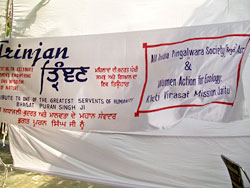 working towards sustainable agriculture, conservation of natural resources, environmental health and eco-sustainable technologies teamed up with Pingalwara, the org started by Bhagat Puran Singh in Amritsar as a refuge to care for those who had nowhere left to go. [Hat tip: Big B!]
working towards sustainable agriculture, conservation of natural resources, environmental health and eco-sustainable technologies teamed up with Pingalwara, the org started by Bhagat Puran Singh in Amritsar as a refuge to care for those who had nowhere left to go. [Hat tip: Big B!]
These two groups combined efforts to revive the lost tradition of Trinjan. KVM created a new initiative- the Women Action for Ecology to encourage women’s participation in an agro-ecological revival movement in Punjab.
From pictures on Pingalwara’s site, it seems that Pingalwara may have envisioned this first attempt at reviving Trinjan to be more a display of Punjabi traditions- natural foods, arts, and crafts. However a report from KVM envisions a much more active and central role for women in reviving Trinjan.
Since women are the first and worst victims of the agro-ecological crisis here and elsewhere, women need to work towards the mitigation process, for their own sake and for the sake of the community. Trinjan is an effort to mobilize women to appreciate their own traditional wisdom and role in the preservation and conservation of the environment in Punjab. Platforms for sharing of knowledge and spreading of practice are the main tool for empowerment of women in Trinjan. (emphasis added) [KVM report]
 While everyone seems to be pretty excited about Kamaljit topping the Billboard charts – it seems that Jay Sean is not the only musician from our community who is gaining a ton of attention lately. In the October/November 2009 issue of East West magazine, an article by Navdeep Singh Dhillon titled, “The Brown Underground” discusses the five new names in hip-hop worth knowing. While on TLH we have featured these names in previous posts and are fans of their work – we wanted to highlight this new article as it provides a very intimate look at these artists. Musicians, rappers, emcees or whatever you may call them – they, at the end of the day, are regular guys (believe me, they are). They work, they go to school, they feel strongly about adversities that are going on all over the world. Unlike many, however, they are using their talent to channel that emotion into creativity and into their music. We definitely like what we’re hearing and whether they know it or not, these artists are paving a path for generations to come.
While everyone seems to be pretty excited about Kamaljit topping the Billboard charts – it seems that Jay Sean is not the only musician from our community who is gaining a ton of attention lately. In the October/November 2009 issue of East West magazine, an article by Navdeep Singh Dhillon titled, “The Brown Underground” discusses the five new names in hip-hop worth knowing. While on TLH we have featured these names in previous posts and are fans of their work – we wanted to highlight this new article as it provides a very intimate look at these artists. Musicians, rappers, emcees or whatever you may call them – they, at the end of the day, are regular guys (believe me, they are). They work, they go to school, they feel strongly about adversities that are going on all over the world. Unlike many, however, they are using their talent to channel that emotion into creativity and into their music. We definitely like what we’re hearing and whether they know it or not, these artists are paving a path for generations to come.
The article highlights the work of Canadian-based Humble the Poet and Sikh Knowledge, D.C.-based Saint Soulja of G.N.E., Hoodini from Los Angeles and Mandeep Sethi from San Francisco. You can read about their quest into this industry and how being a Sikh plays a role (or does not) in their music. What’s clear about these artists is that while they are Sikh, they don’t necessarily only rap about Sikh issues or only about issues affecting our community and that’s what makes them stand out in my mind. Injustice to any group is an injustice to humanity and as Sikhs, that is something we should resist. We can rest assured that these artists are having that dialogue.
Sotheby’s is having an auction today in New York of South Asian Modern and Contemporary Art including Miniature  Paintings.
Paintings.
Sotheby’s September 2009 auction of South Asian Art features a carefully-curated offering of works by leading modern and contemporary Indian artists, accompanied by an eclectic group of miniature paintings from the Rajput and Punjab Hills courts of northern India, as well as a selection of cutting-edge contemporary art from Pakistan. [Sotheby’s]
Of interest is a 1912 large portrait (approximately 5’x3′) of Guru Gobind Singh Ji estimated at $50,000-$70,000, as well as a miniature of all the Sikh Gurus with Guru Nanak Ji at the center, and a miniature of Maharaja Ranjit Singh on his stallion with weapons, accompanied by foot soldiers.
This large portrait of Guru Gobind Singh Ji, according to a Times of India article, is part of a series of four closely-related paintings depicting Guru Gobind Singh. Apparently each portrait was the inspiration for the next. It’s unclear where in the series this painting belongs or who the painter was, but the last painting in the series is currently on display at Hazur Sahib in Maharashtra and was created by Hari Singh.
Which leads to questions- if the last in the series is at the Hazur Sahib and this is at Sotheby’s, where are the other two? What path have these pieces taken? The works in this collection were probably passed down from one legitimate private owner to another. Perhaps they were commissioned by British officers. I have no evidence of anything otherwise.
But in general, the plunder from wars and violence often ends up on sale somewhere far from its source. The art and artifacts that were lost in Operation Bluestar weren’t inventoried. We don’t even have a way of identifying lost or stolen art in order to make a claim that it rightfully belongs to the community. Perhaps a budding art historian will be interested in a research project… attempting to document artwork remembered as being held at the Darbar Sahib or other sites of looting so that if it shows up on sale, we’ll be able to recover it.
According to a Deputy Director of Sotheby’s, the collector base for miniatures is largely made up of European, British and American collectors. It includes only a small group of NRIs. [TOI] Glad to see that we’re keeping our heritage intact for future generations! 😉
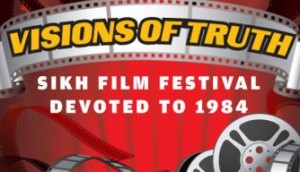 Last week, Reema discussed the dynamic Punjabi-Sikh art scene. We’ve come a long way, especially in the field of film and media with a growing number of films by, for and about Sikhs. Now, you can attend Sikh film festivals in every corner of the country and even internationally. In addition to this, Sikhnet recently announced it’s 2009 Youth Online Film Festival. This online film festival is especially significant as it offers young inspired Sikhs an opportunity to showcase their creativity on a positive platform. Films such as turBAN, a film by Dashmesh Pictures and G.N.E., provides an “artistic editorial challenging current regulations invoked in the French public school system.” Each film plays an important role in portraying Sikh stories in creative ways.
Last week, Reema discussed the dynamic Punjabi-Sikh art scene. We’ve come a long way, especially in the field of film and media with a growing number of films by, for and about Sikhs. Now, you can attend Sikh film festivals in every corner of the country and even internationally. In addition to this, Sikhnet recently announced it’s 2009 Youth Online Film Festival. This online film festival is especially significant as it offers young inspired Sikhs an opportunity to showcase their creativity on a positive platform. Films such as turBAN, a film by Dashmesh Pictures and G.N.E., provides an “artistic editorial challenging current regulations invoked in the French public school system.” Each film plays an important role in portraying Sikh stories in creative ways.
Another notable film-related event is Visions of Truth, a traveling film festival devoted to showcasing films about 1984. The film festival will be held during the months of September and October in eight regions in California including: Yuba City, Sacramento, San Jose, Fresno, Los Angeles, Irvine, Riverside and San Diego.
The goal of “Visions of Truth” is to spur dialogue between members of the community by showcasing film and music media related to the third Sikh holocaust (1984). This event remains one the most significant, events in the history of Sikhs. In early June 1984 the Indian Army invaded one of the most historic of all Sikh Gurdwaras, the Darbar Sahib complex in Amritsar, Punjab. The ensuing destruction and loss of life marked one of the darkest chapters of the later 20th century for Sikhs. The aim of the film festival is not only to remember the events of 1984 but also to raise awareness in the community and promote positive dialogue. [link]
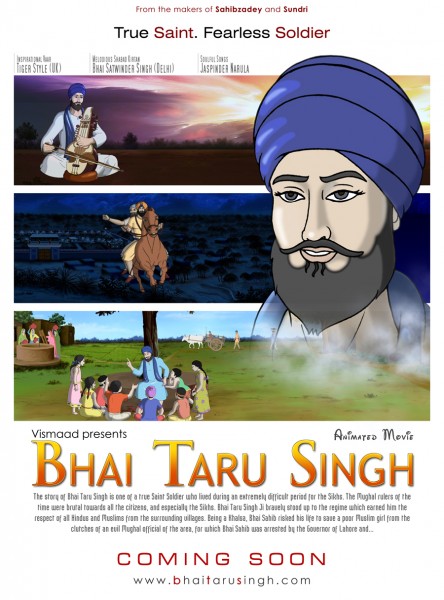 babania kehania put saput karaen ||
babania kehania put saput karaen ||
The stories of one’s ancestors make the children good children.
(Guru Amar Das, Raag Raamkalee, Page 951 of Guru Granth Sahib)
The American writer Muriel Rukeyser once said that the universe is made up, not of atoms, but of stories. This especially holds true for the Sikh universe. Stories or anecdotes from our short but action-packed history provide us with guidance, inspiration and resilience. Who needs fictional super-heroes when the Sikh narrative provides us with so many real-life heroes who did extraordinary things?
For most Sikhs, myself included, these Sikh stories told to us by our parents and grandparents were an essential part of growing up Sikh. However, we’re quickly losing this great oral tradition. For a variety of reasons, parents and grandparents aren’t telling sakhis like they used to and kids aren’t listening to them.
(more…)
In many ways, the Punjabi-Sikh art scene is expanding exponentially these days. Just 10 years ago, beyond major, mainstream singers, I don’t think there was an arts scene, except maybe in people’s homes. Today, there are film festivals in most major cities like Spinning Wheel and the upcoming Sikh Heritage Film Fest in NY, art exhibits in museums such as the recent exhibit at NY’s Rubin Museum and current exhibit at the London’s Victoria and Albert, and even spoken word shows like When Lions Roar and Lahir. There are independent artists writing thoughtful lyrics, creating original beats, and giving some of our community’s concerns a voice. One of my favorites from this summer is Humble the Poet’s “Singh with Me” featuring Sikh Knowledge.
Yet, while the number and modes of art and artists grows in our community, many mainstream musicians are following  mainstream trends… videos featuring flashy cars rented for the shot, women as props, all at some party. Maybe they’re catering to what they think the audience wants, but the audience is clamoring for what they see as glamorous… which is manufactured to cater to the whims of the audience. This degenerative, downward spiral has led to recent hits such as RDB’s “Om Mangalam.” (See end of post.)
mainstream trends… videos featuring flashy cars rented for the shot, women as props, all at some party. Maybe they’re catering to what they think the audience wants, but the audience is clamoring for what they see as glamorous… which is manufactured to cater to the whims of the audience. This degenerative, downward spiral has led to recent hits such as RDB’s “Om Mangalam.” (See end of post.)
RDB is clearly identifiable as Punjabi-Sikh (let’s not talk about who’s a good or bad Sikh- that’s boring), wearing the now fashionable Palestinian support scarf, and singing Om Mangalam in this video on the homepage of their official site. This is definitely a case of trying to do too much and doing it all badly. There’s nothing inherently wrong with being Punjabi, singing Hindi music (while wearing a Palestinian support scarf), in a video with meaningless lyrics. It’s just not art. Some might call it entertainment, though I’d call it a train wreck.
East coasters and others with expendable income: the Sikh Art & Film Foundation is bringing you the 2009 International Film Festival to be held at the Asia Society and Museum.
The Festival will kick off on Friday September 18th with 3 films (My Mother India, Flying Sikhs – A History of Sikh Fighter Pilots, and Nineteen Eighty-Four and the Via Dolorosa Project). The night ends with a party at Asia Society’s Garden Court. The Festival continues on Saturday with 4 documentaries (A Warrior’s Religion
Not Every Time…, Turbanology, Who Do You Think You Are – Meera Syal) and 6 short films (Battle of Chillianwala – The Waterloo of India, Bhangra Generation, Prisoner’s Song, Street Smarts, turBAN, and
Unravelling). Saturday concludes with the Heritage Gala After Party at Leela Lounge. Mira Nair will be honored and $15,000 in cash will be awarded to filmmakers.
A pass to all above events is only $45. Buy your tickets before they sell out!
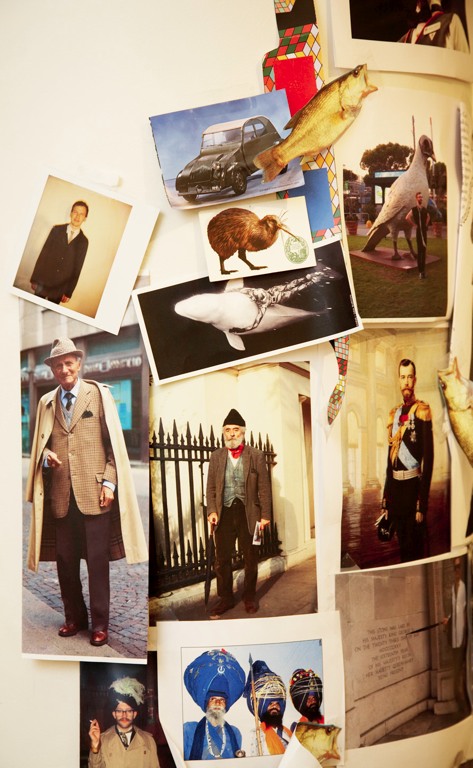 We live in a global world and there are images around us that constantly stimulate us. Once in a while we’ll see images that also inspire us – whether it be musically or artistically. For Lucas Ossendrijver, Dutch-borh Lanvin’s men’s wear designer, a familiar image appears on his inspiration board. [See bottom of picture].
We live in a global world and there are images around us that constantly stimulate us. Once in a while we’ll see images that also inspire us – whether it be musically or artistically. For Lucas Ossendrijver, Dutch-borh Lanvin’s men’s wear designer, a familiar image appears on his inspiration board. [See bottom of picture].
Nihangs have often been an inspiration for many photographers, and it’s clear why they are also an inspiration for designers. A recent article from Punjab Heritage News titled, “Mesmerised with the world of Nihangs” speaks to this,
Today, some people see Nihangs as a relic, but others recognise them as a colourful and important part of the Punjabi heritage. Gurbir Singh Brar, a photo artist also feels that there is no colourful subject as compared to Nihangs.
Nick Fleming, a UK-based photographer also spent time with Nihangs and has a photo exhibit titled, “Nihang Singhs of Punjab.” I have included a few of his stricking images after the jump.
While there is much to worry about in the world (and plenty of blog space devoted to that), from time to time it’s valuable to enjoy those things that inspire us and of course, it’s always important to appreciate art!
 African American publishing houses were born out of a need – the need to fill a void in the industry. Bookshelves needed to share stories of their struggles and to give children a stake in their evolving identities. In turn, they gave rise to a new generation of diverse voices, with Asian-Pacific and Latino publishers following suit. They all have the same goal – to represent stories of their respective communities and give readers some authenticity and a sense of belonging. Now, consider this, how often did the covers of the books you read as a child have children who looked like you? Did these children’s books offer you a sense of belonging or importance? As our children enter into such a global community, it is clear that having access to authentic literature representing their heritage can only help ease the numerous challenges of peer pressure and to elevate self-esteem. Literature is perhaps the strongest avenue to enable us to realize our commonalities while teaching us about the idiosyncratic nature of one another.
African American publishing houses were born out of a need – the need to fill a void in the industry. Bookshelves needed to share stories of their struggles and to give children a stake in their evolving identities. In turn, they gave rise to a new generation of diverse voices, with Asian-Pacific and Latino publishers following suit. They all have the same goal – to represent stories of their respective communities and give readers some authenticity and a sense of belonging. Now, consider this, how often did the covers of the books you read as a child have children who looked like you? Did these children’s books offer you a sense of belonging or importance? As our children enter into such a global community, it is clear that having access to authentic literature representing their heritage can only help ease the numerous challenges of peer pressure and to elevate self-esteem. Literature is perhaps the strongest avenue to enable us to realize our commonalities while teaching us about the idiosyncratic nature of one another.
This is why we are so excited to bring you news about a new children’s book that promises to be “a staple on the shelves of young visionaries.” A Lion’s Mane, being released this month, is written by Navjot Kaur and illustrated by Jaspreet Sandhu. The book is published by Saffron Press, an independent publisher, aiming to encourage children to deepen their understanding of positive self-identity.
In this beautifully illustrated story, young readers journey to cultures around the world to explore the meaning of the dastaar, or turban of the Sikhs. Allusive words placed within a vibrant red dastaar help promote our connections as global citizens and encourage dialogue around issues of identity and kinship. [link]
This book certainly moves beyond the traditional in several ways. A Lion’s Mane brings a global perspective to the often misidentified image of the Sikh turban. It is printed on 100% recycled paper as well as displaying an Eco-Libris badge – 625 trees were planted for the first edition! In addition, a portion of proceeds from the sale of each book will support Seva Canada’s work to restore sight and prevent blindness in children. By shopping at Saffron Press, you really will be contributing to a green and ethical experience! We spoke with the author, Navjot Kaur, about the book and the challenges she underwent to have this story published. After the jump is the book trailer and the author’s first interview. As you view the information, consider this – how important is diverse and multicultural literature on the shelves of every library and school? Did you or do your children have access to this type of literature?
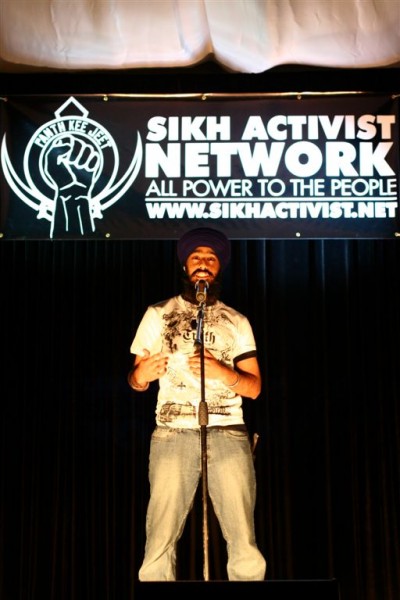
It is often said that a revolution begins not with the sword but with the pen. However, last Friday night in a packed banquet hall in the Toronto suburb of Malton, I witnessed a revolution begin with the microphone.
At an event entitled “When Lions Roar”, fantastically organized by the Sikh Activist Network, one young artist after another got on to the mike and paid homage to the lives destroyed in 1984. I was blown away by the talent and passion displayed by the performers. Through the art of spoken word, music, and action, each of the 26 acts put a different face on the impact of June 1984. They were all unique in their perspective, but all shared one common thread: 1984 is just too important to forget.
Over 1000 people gathered to attend the 4+ hour event. They covered the entire spectrum of Sikh life. This was not your typical retreat and kirtan crowd. In fact, the diversity of performers and audience has challenged me to rethink my stereotypes about who cares about 1984 and the future of the Sikh panth. Individuals that I would have never suspected of having even a passing interest in Sikhi or the Sikh community, would come up to the mike and speak with such energy, insight and emotion. They often reduced me to tears. And most amazing was the fact that almost all of them weren’t even alive in June 1984.
For a thirty-something guy like me who has always considered myself part of the “youth”, it was indeed a little bit humbling to realize that, while I’d probably still be the youngest guy at a Youth Akali Dal meeting, I’m now probably a generation or two above the youngest Sikh leaders. Which means me and my fellow Generation X-ers need to spend less time trying to do it all ourselves, and more time using our resources to enable the next wave of younger Sikhs to establish their own voice and institutions. We were the first generation coming through the diaspora, with little support from our elders. However, we can make it easier on our younger brothers and sisters. We can provide them seed funding to start their dreams, connect them those that can help them along the path, and help coach them through their challenges.
As you’ll see from the videos and photos, the next generation has indeed stepped up, their language of change is hip-hop and I think they’re gonna be alright.
Click through for videos and pictures.
Mark your calendars- the Kaur Foundation and the Asian Division of the Library of Congress have 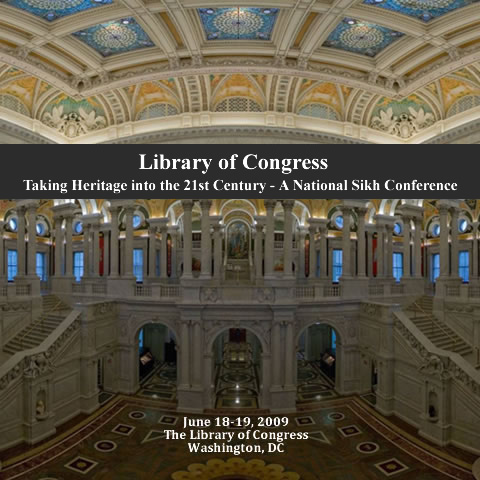 teamed up to undertake a unique initiative, to institutionalize knowledge by and about the Sikh community for future generations. The Library of Congress is the oldest federal cultural institution in the US, the largest library in the world, and the research wing of Congress. (LOC). The Sikh Collection Initiative is an effort to ensure that knowledge of and by Sikhs is collected and preserved for future generations. Given the tragic loss of valuable cultural and religious artifacts, manuscripts, and books from the Sikh Reference Library in the Darbar Sahib complex during Operation Bluestar, an initiative such as this begins to ensure that collective knowledge of our community will be preserved somewhere.
teamed up to undertake a unique initiative, to institutionalize knowledge by and about the Sikh community for future generations. The Library of Congress is the oldest federal cultural institution in the US, the largest library in the world, and the research wing of Congress. (LOC). The Sikh Collection Initiative is an effort to ensure that knowledge of and by Sikhs is collected and preserved for future generations. Given the tragic loss of valuable cultural and religious artifacts, manuscripts, and books from the Sikh Reference Library in the Darbar Sahib complex during Operation Bluestar, an initiative such as this begins to ensure that collective knowledge of our community will be preserved somewhere.
As our nation grows and becomes more diverse, it is critical that we appreciate and understand the different backgrounds of all that make this country great. Sikh Americans have significantly contributed to every field of human endeavor from technology, commerce, health, science, agriculture, to the arts – further enriching the cultural fabric of this land of immigrants.
